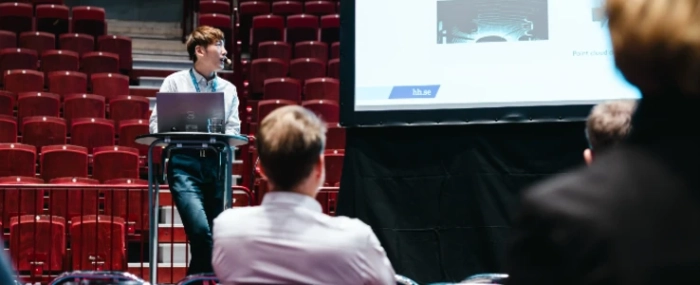
New research highlights radar sensor risks in harsh environments
During Evertiq Expo Malmö on 15 May 2025, Jeongmin Kang, postdoctoral researcher at Halmstad University, presented new findings on how dust and moisture can impair the performance of radar sensors in autonomous vehicles. In a follow-up interview, Kang expanded on the implications for sensor design, placement, and future research directions.
In the original study, Kang and his colleagues demonstrated that moisture mixed with dust causes far greater signal attenuation than dry dust alone. This raises important questions about sensor placement and protection.
“The degree of contamination on the surface of sensors mounted on vehicles can vary due to factors such as vehicle type, driving environment, and sensor placement,” Kang explained. “This work emphasises the necessity of analysing contamination levels at sensor mounting locations in order to maximise the performance of radar sensors.”
One surprising takeaway from the study was how well radar sensors still performed under layers of dry dust – a resilience not always expected, even within the industry.
“While radar sensors are generally known to perform well under adverse weather conditions compared to other sensors, they are not completely immune to all sources of contamination. It should be noted that dust containing moisture can remain on the sensor surface longer than water alone.”
Asked whether he has explored mitigation strategies, Kang pointed to the potential for post-processing methods.
“Post-processing methods that compensate for raw data distortion may be considered,” he said. “The results of this study demonstrate how contamination affects raw data and may offer insights for sensor design or compensation strategies during post-processing.”
Looking ahead, Kang sees a need to expand the scope of research beyond dust and water.
“Contamination of sensor surfaces can come not only from dust and water, but also from factors such as salt, snow, or ice,” he said. “A comprehensive analysis of sensor performance under such conditions remains necessary and could provide valuable considerations for both vehicle and sensor designers.”
While the automotive industry continues to refine the hardware and software needed to make self-driving vehicles reliable in the real world, Kang’s research underscores a persistent truth: the natural environment remains a complex and unpredictable adversary – one that demands both careful engineering and continued research. Evertiq Expo will return to Malmö Arena on 21 May 2026 for its fifth edition.



